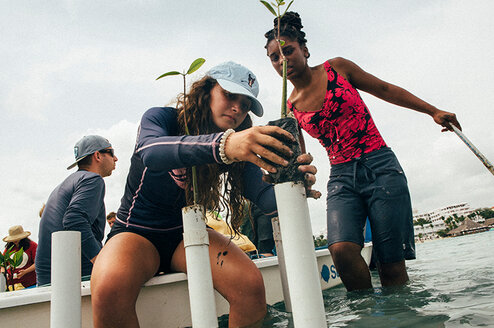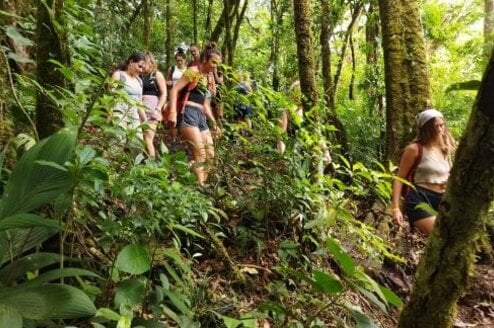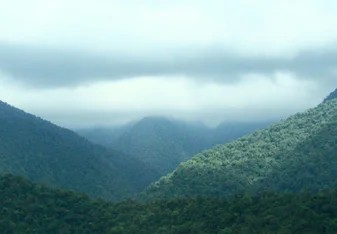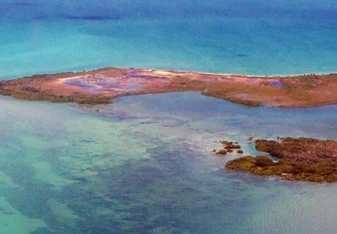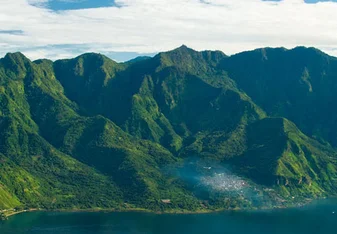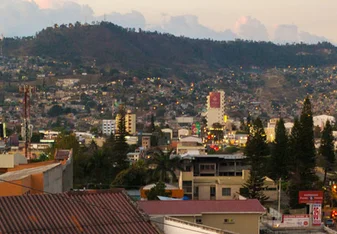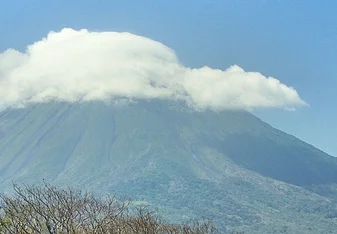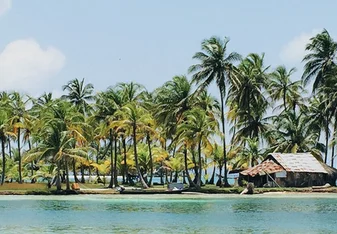Gap Year Programs in Costa Rica
Gap Year Programs in Costa Rica
Pagination
About
Home to endless species of wildlife and lush rainforests, Costa Rica’s tropical climate welcomes millions of visitors who can’t seem to get enough of this paradise on earth! Costa Rica, which means "rich coast," is the perfect destination for wildlife enthusiasts and ecotourists. The landscapes and scenery of this small nation are equally varied. From stunning beaches to dense jungles, Costa Rica has it all, including a rich cultural blend of European and Mestizo elements.
Types of Programs
Volunteering
Costa Rica is one of the most beautiful countries to volunteer in. Known for its black sand beaches, lush rain forests, and laid-back “Pura Vida” lifestyle. Costa Rica borders the Atlantic and Pacific Oceans and houses a famous biodiversity, and many endangered species that are in need of protection. Many volunteer programs work to protect the nesting turtles that return to the beaches of Costa Rica every year to breed and lay their eggs.
Volunteering in ecological research will give you the free time to hiking the numerous mountain trails, riding on horseback to the beach, or visiting the colorful cities. While there are many environmental organizations looking for volunteers in Costa Rica, the populations of poorer rural areas and urban slums are also in need of volunteers. The country has a high literacy rate but still struggles with urban poverty, child labor, and a high rate of alcoholism and drug addiction in its cities. Volunteers are needed throughout the country.
Adventure Travel
Travel to cloud-covered Monteverde Forest and become swept up in the beauty of this mysterious landscape. In this unique mountain rainforest, the humidity is often as high as 100%. Monteverde is home to more than 3000 species of animals and plants and is a great place to explore while doing meaningful work with conservation programs.
For adventurous travelers, Arenal, the country’s largest volcano, is a must-see. In La Fortuna, a tiny town near the base of the volcano, you will be greeted by hospitable locals. Costa Rica offers many opportunities to scuba dive, snorkel, rock climb, hike, free dive, and even bungee jump. It’s the perfect country for the most adventurous gapper. And, after a long day of physical exertion, you can relax both your mind and body, eating delicious seafood and catching a glimpse of the surreal Costa Rican sunset.
Internships
Although Costa Rica is a small country, the country offers a wide variety of internships. Many internship programs will work with interns to find a job that fits their skills and interests. Interns in Costa Rica have the rare opportunity to learn essential professional skills while making a difference in the local community. International internships often have a strong academic component that allows interns to learn an incredible amount (including the local language and customs) while also providing volunteer opportunities.
While ecological internships are the most prominent internships in the country. For less science-minded gappers, Costa Rica also offers internships in journalism, politics, law, and business. Gappers can learn the business aspects of Costa Rica's tropical agricultural products.
Planning Your Trip
Cost of Living in Costa Rica
Prices in San José are the second lowest of any city in the Americas. The cost of goods and services is among the lowest of any city in the world. The US Dollar is significantly stronger than the Costa Rican Colon. In Costa Rica, European and U.S. gappers can experience a luxurious lifestyle without breaking the bank. Housing in Costa Rica costs substantially less than in America. Public transportation is also very reasonable. For example, a bus ride across town or to the suburbs usually costs from 25 -50¢. Even taxis in San José are relatively inexpensive.
Food, continuing education, entertainment (movies cost a little over $3.00), and, above all, health care, are surprisingly affordable.
Culture and Etiquette in Costa Rica
Costa Ricans are very friendly and do not easily take offense. Nevertheless, it’s always important to familiarize yourself with the local customs. Men shake hands when greeting one another and maintain direct eye contact. The same goes for meeting a woman. As you become friendlier with the amazing people you meet, you will generally greet women with a light kiss on the cheek.
Costa Rica has a vibrant and unique culture, it was once the point where the Mesoamerican and South American cultures met. When the Spanish conquerors (conquistadores) came in the 16th century, a cultural clash began. As a result, Costa Rica developed new styles of art and music that were influenced by both cultures.
Costa Rican cuisine is a blend of Native American, Spanish, and African elements. Traditional Mesoamerican dishes include tamale, but Spaniards brought many new ingredients, especially spices and domestic animals. Later, African settlers added Caribbean flavors to the mix. Costa Rica is renowned for its exquisite cuisine.
When the Spanish conquered Costa Rica, they brought with them the Catholic religion and its many customs. As a result, the culture in Costa Rica is socially conservative by European standards, but vibrant and passionate nonetheless.
Dance oriented genres, such as soca, salsa, bachata, merengue, cumbia, and Costa Rican swing are enjoyed throughout the country. Costa Rican guitar music is very popular in Central America. A history of rebellion and social strife throughout the country gave rise to great artists, such as Francisco Amighetti, Fadrique Gutierrez, Jose Francisco Salazar, and Carlos Luis Fallas.
Although the Costa Rican natives had to endure many hardships, their culture is one of peacefulness and relaxation. "Pura Vida" is the most recognizable phrase attached to Costa Ricans, and it reflects the Costa Rican way of life. Often, people walking down the streets, or buying food at shops say hello by saying "Pura Vida", which means pure life, or good life.
Health and Safety in Costa Rica
It’s gross to say, but diarrhea is the most common travel-related ailment in Costa Rica. Take precaution with food and water. Drink bottled water when you can and be sure to bring an anti-diarrhea drug along with antibiotics. Pepto Bismal to the rescue!
Costa Rica is a middle-income, developing country with a strong democratic tradition. Health care in Costa Rica is surprisingly affordable and accessible; however, as a developing nation, diseases such as Malaria and Yellow Fever are still problematic. Make sure to be vaccinated for both of these. You don’t want to spend your entire gap year with your head over the toilet!
Since English is a second language for most Costa Ricans, knowledge of Spanish is necessary for your safety in all non-tourist areas. Small crime is prevalent in the city, especially against gullible foreigners. All countries suffer from crime and crime rates across the world have risen due to economic uncertainty. Beware of scam artists and always keep an eye on your personal possessions.
What People Are Saying
Related Gap Year Articles
Frequently Asked Questions
-
What are the benefits of a gap year in Costa Rica?
Wildlife enthusiasts and conservationists will benefit significantly from the biodiversity and conservation programs in Costa Rica. The government dedicates itself to preserving their natural resources. There are many research programs to learn about the animals that call these lush rainforests home, including jaguars, pumas, and sloths.
-
How much does it cost to live in Costa Rica for a year?
Costa Rica is an affordable destination, especially considering the natural beauty of the country. An individual could live comfortably on USD 1400 - 2000 a month. Your total gap year cost will vary significantly based on what you do during your time in Costa Rica, and if you partake in any work exchanges.
-
What kind of visa do I need for a gap year in Costa Rica?
Visa requirements depend on your nationality, country of residence, length of stay, and whether you will work or study during your time in Costa Rica. Most gappers will travel under a tourist visa (90 days or less) or a provisional visa for longer stays.
-
What are the most popular types of gap year programs in Costa Rica?
Costa Rica boasts some of the most biodiverse rainforests on earth, making it a perfect destination for wildlife enthusiasts and conservationists. Many programs focus on researching the plants and animals that live in Costa Rica and supporting efforts to conserve them. Costa Rica also has excellent surfing and scuba diving programs for those looking to enjoy the Ocean.



